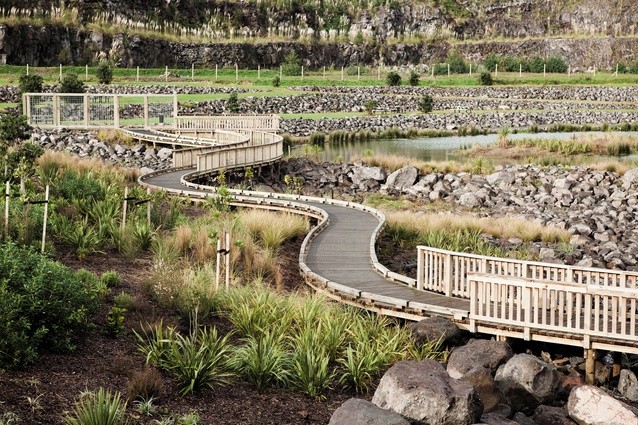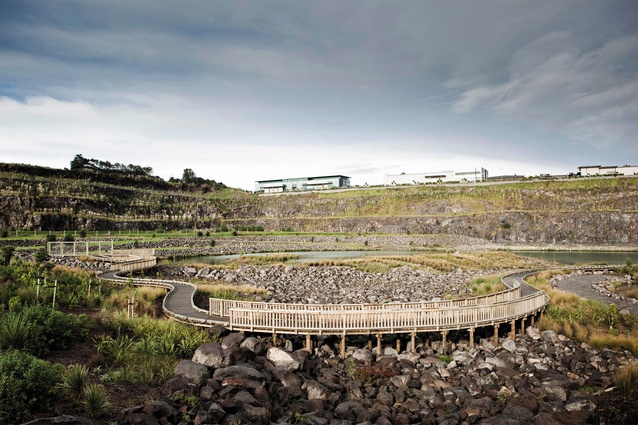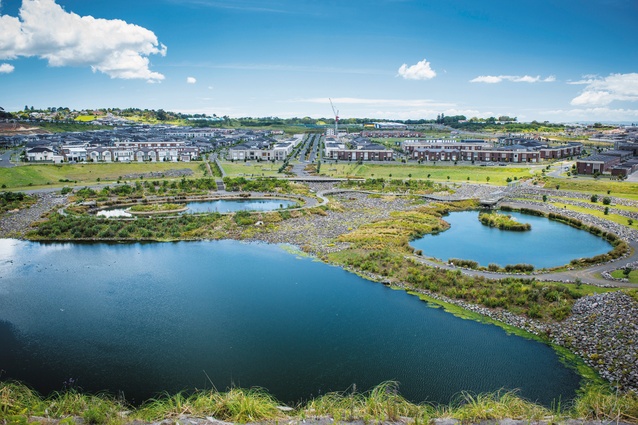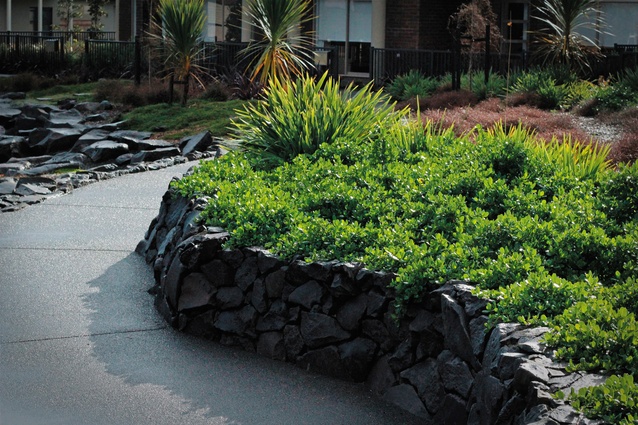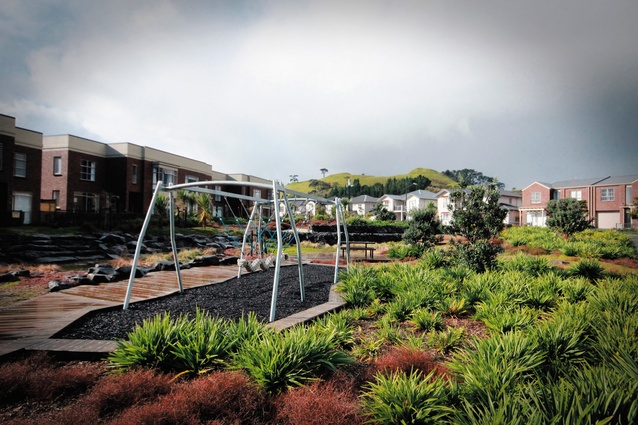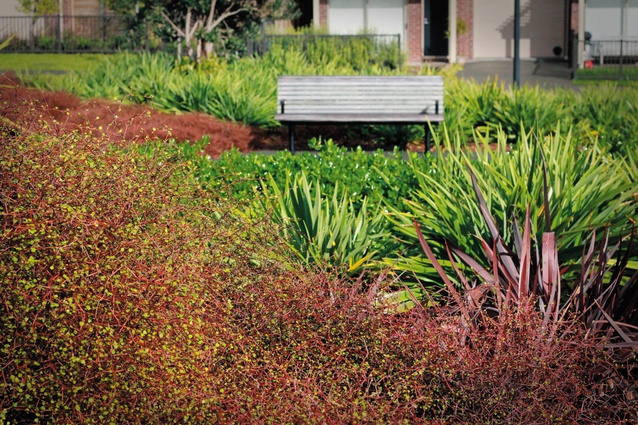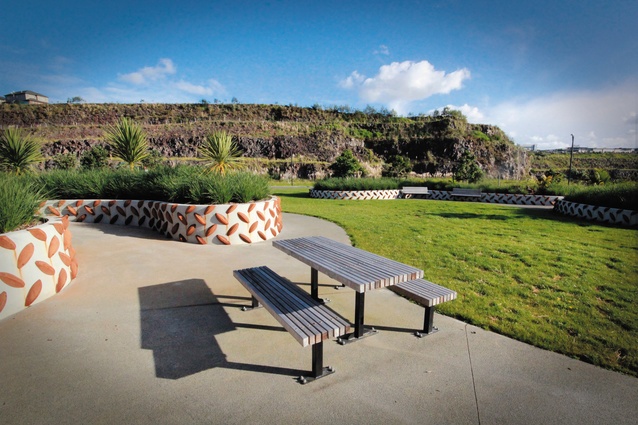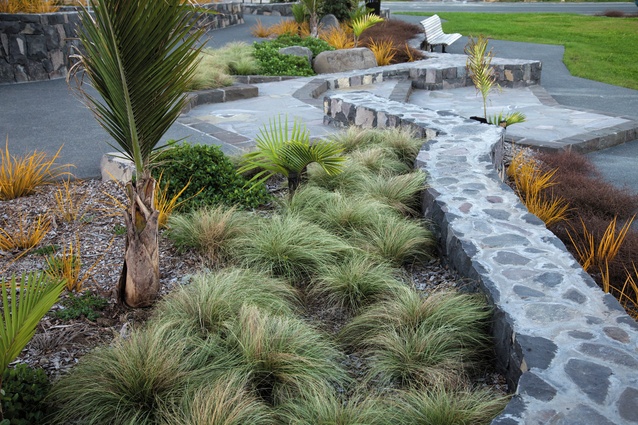Stonefields
You may say what you want about the style of architecture, but this seems to be what people want. Homes at Stonefields, a deceptively large (110Ha, 2,900 dwellings, 6,500 person) Todd Properties development that occupies the wide bowl of what once was a Winstones Quarry, sell well. Faster than they can be built, it is said. Perhaps that says more about the housing market, but for whatever reason, the success of this new suburb is undeniable. Visit on a Monday lunchtime, however, as I do, and you might encounter an eerily quiet world of medium and high density design-and-build-style houses and townhouses; brick and Linear weatherboards predominate, all embraced within the quietude of the former quarry’s bluestone walls. But the silence of a warm Monday afternoon at the development is quite at odds with what landscape architect Debbie Tikao recalls of the early days at Stonefields development, when it was less tree-lined suburb and more “vast hot quarry”. Then, she says, “the relentless sound of rock crushing was deafening”.
Today, the overall colour scheme is beige on beige with moments of red brick and white-painted brick visually segregating off pockets of the development. It might sound terminally vanilla (perhaps this is what our forebears said of streets lined with inevitable villas and bungalows) but the residential uniformity is liberated by the landscape architecture of Surface Design and Natural Habitats. The development is dotted with 11 small pocket parks (some with magma-referencing names such as lava-flow and volcano; in case you’re wondering, it has been 9,000 years since this cone erupted) and quite a number of residences benefit from alignment towards these green spots. There is also a crown jewel – a dramatic, 5.3Ha wetland comprised of three lakes and surrounding wetland zones which are embellished with solid serpentine boardwalks. The wetland park sits, for those familiar with the area, at the Lunn Avenue end of the development. Landscape architect Jenny Wood, from Natural Habitats, my tour guide on this spring day, rightly points out that the light industrial buildings that line the quarry edge of Lunn Avenue are now facing the wrong way. Lunn Ave has few charms; a reverse angle would provide
a better outlook; a volte-face is, most likely, out of the question.
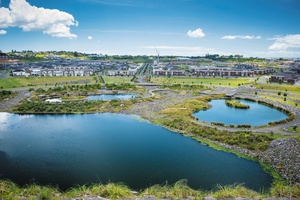
Stonefields sits at the base of Maungarei, one of the four largest of Auckland’s volcanic cones. The sculpted volcanic form of the mountain, whose terraces and citadels are clues to its history of inhabitation, rises 130m above sea level. In the old quarry, cut bluestone cliff faces enclose the development site on all but a couple of sides. James Lord, from San Francisco-based Surface Design, was responsible for the original concept designs for the development. He was brought in by Todd Properties, he says, after Auckland Council had, commendably, requested a stronger, design-led proposition. “They were demanding real design, which was a rarity, and so we were brought into do that.”
Surface Design completed the master plan and the conceptual designs for a number of the parks. The wetland, says Lord, was already planned, although the initial design was changed from a “more engineered approach” to something more natural. Natural Habitats adopted the initial conceptual work for the parks done by Surface Design (although Lord says the reality is that the relationship has been very collaborative), taking care of the detailing and plant selection, with the last several parks have moved further away from some of those initial concepts. “The general intent and structure that [Surface Design] established has formed the backbone to this development, which has been carried through to create a distinctive sense of place,” says Natural Habitat’s Debbie Tikao.
Tikao and Wood have both worked on the project for six years. For them, the project has involved the design of ten neighbourhood parks and one drainage reserve. For Wood, it was one of her first projects out of landscape architecture school. In the early days of the development, Tikao recalls them both, “clambering over massive boulders with cans of dazzle in hand, trying to identify rocks which may have potential use within the development over the coming years.”
Tikao says that it has been the most rewarding project of her career to date. “It’s not often you get to know a site the way we’ve come to understand this environment. We’ve been able to improve what we do… learn from mistakes, and with each park we’ve been able to work towards a complete picture which ties together the geological, ecological and cultural history of the site with the needs of a new and growing community.”
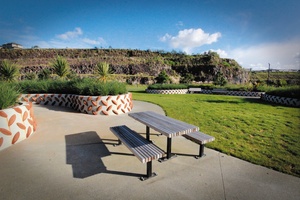
To date, eight of the neighbourhood parks and the drainage reserve have been built, with the drainage reserve and one of the neighbourhood parks joined together to form Maungarei Springs. Over the past three-and-a-half years, six parks have been entered into the NZILA Pride of Place awards, with four receiving awards. Separate to the reserves projects, Tikao and Wood have also designed a plaza space for the Stonefields neighbourhood centre, currently under construction, and a number of pedestrian linkages, including a massive flight of timber steps set amongst volcanic forest type vegetation, and environs for two of the apartment blocks which are under construction.
The functions of each of the 11 neighbourhood reserves, some of which you can see on the following pages, differ, but they are connected by commonality of materials, vegetation and detail, say the designers.
“Bluestone, in all its forms, from crushed 10mm aggregate used in concrete to massive hand selected boulders and everything in between has been utilised from the quarry; the craft of stone masonry is celebrated through different types of stonework, from drystack to refined cut stone walls. Plant selection is predominantly native with a dominance of specimen trees which are typical of the volcanic forest.”
There are some delightful moments at Stonefields: the designers have been diligent in seeking out of a variety of expressions from a restrained palette of materials, and you can also see a willingness to break from the major chord of native planting and provide exotic breaks, notably at the wildflower park and in the productive fruiting trees, which also lean towards the more overarching objectives, exhibited by both landscape architect and client, to not just embellish the residential development with green spots, but to look for ways to build a community.

